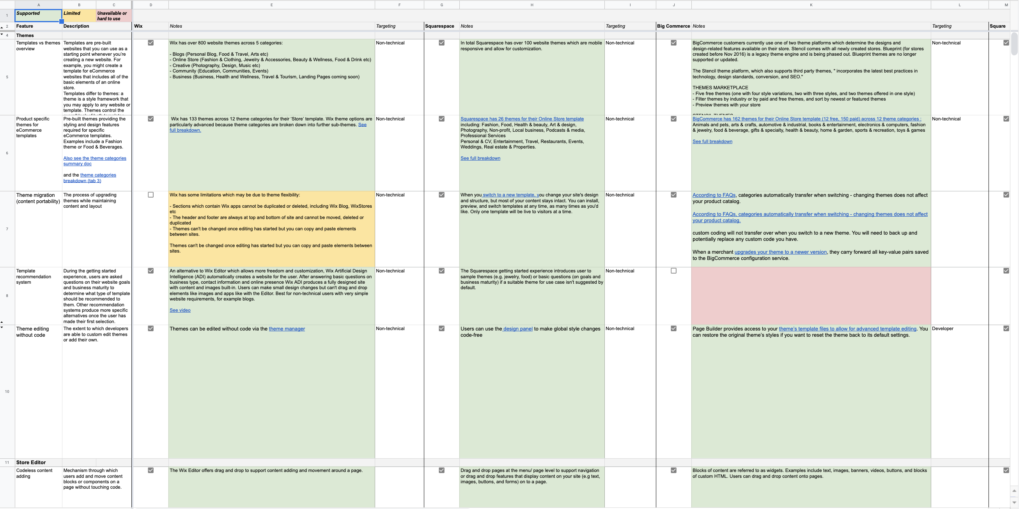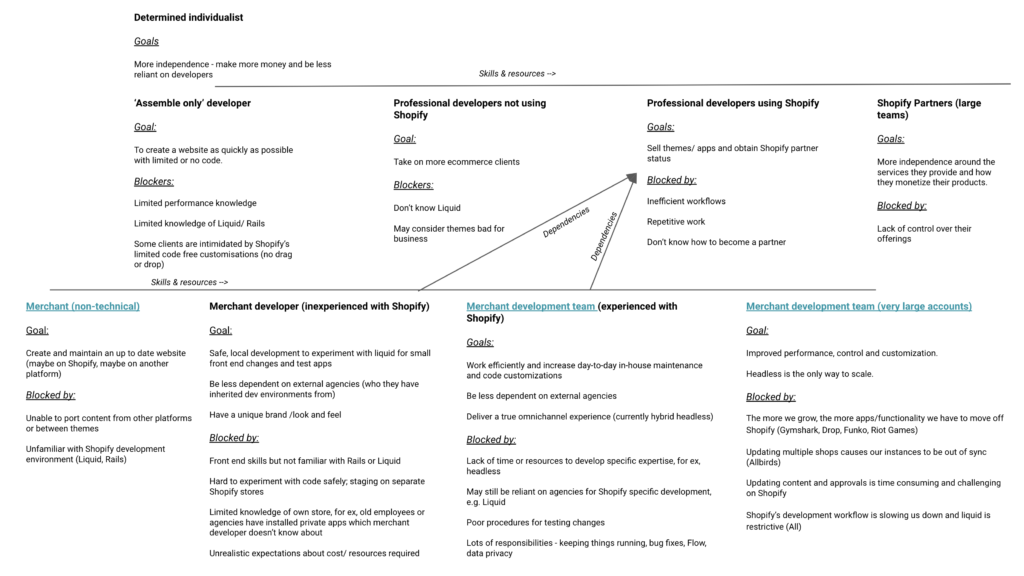Drive adoption of JSON templates among existing theme developers on the Shopify Theme Store.
Personas

App Partners

Theme Partners

Agency Partner
App Partners
App partners build apps for use on the frontend or backend of a merchant’s store. For example, showing reviews to customers, or supporting backend functionality like shipping. These developers sell their products to millions of merchants on the Shopify App Store.
Responsiblities
- Follow Shopify requirements for installation, onboarding, functionality, and quality.
- Support merchants that have issues with their third-party apps.
- Make apps Online Store 2.0 compatible.
Challenges
- No structured, end-to-end solution for apps to easily integrate with themes.
-
Building integration logic for every existing theme is tedious. It’s hard to build app features that work consistently across all themes.
Theme Partners
These partners build and maintain paid themes in the Shopify Theme Store. They’re ecommerce experts and have teams of 10-20 designers and developers. They often sell apps as well as themes.
Responsiblities
- Follow Shopify requirements for installation, onboarding, functionality, and quality.
- Support merchants that have issues with their third-party themes.
- Make themes Online Store 2.0 compatible.
Challenges
- No standardized workflow for building themes.
- Keeping up to date with platform changes.
- Handling support requests, particularly from the impact of apps.
Agency Partner
Full-service professional developers or small agency teams. These partners that are closely bought into the Shopify ecosystem. They support merchants with performance and migrations, and sometimes brand new features.
Responsiblities
- Building and maintaining storefronts.
- Front-end development.
- Setting up integrations.
- Building private apps and adding new features.
- Migrations to Online Store 2.0.
Challenges
- The amount of time spent on performance.
- Inefficient workflows and painful incremental work (e.g. creating sections from scratch).
- Helping non-technical clients make small updates to their store.




